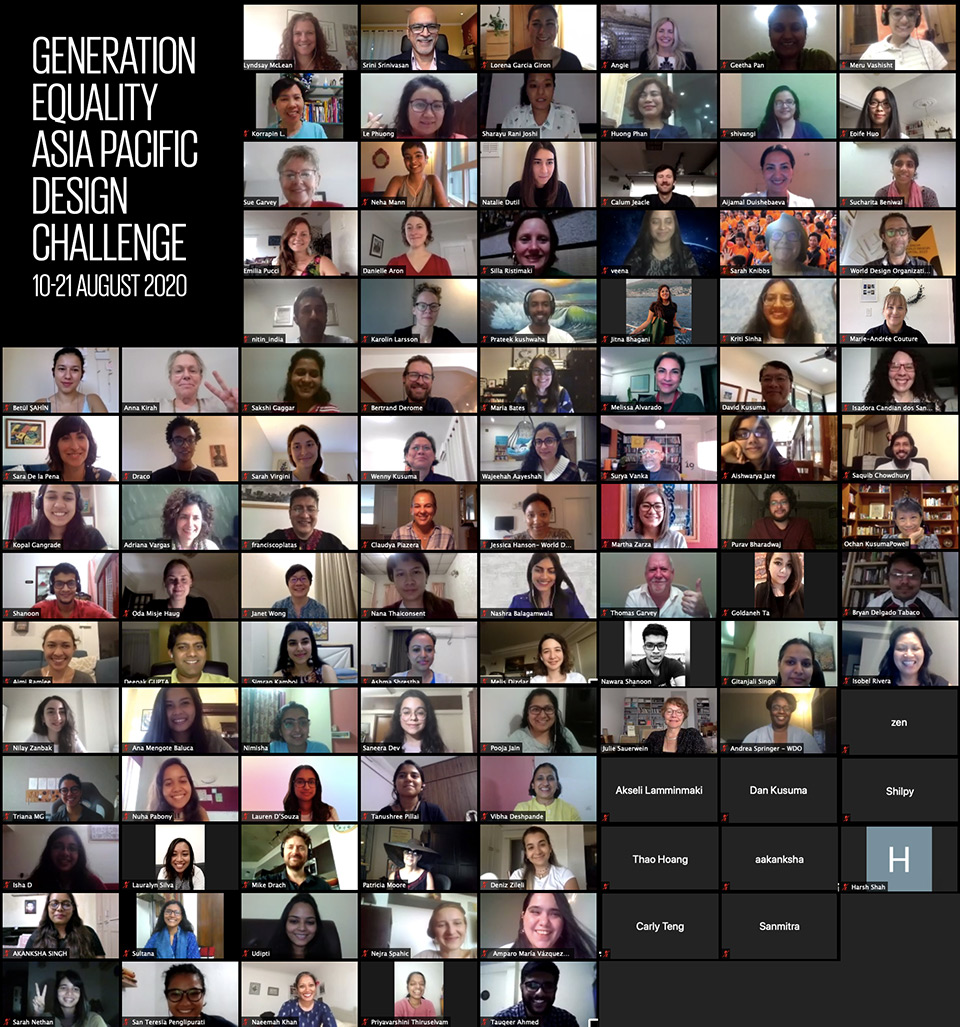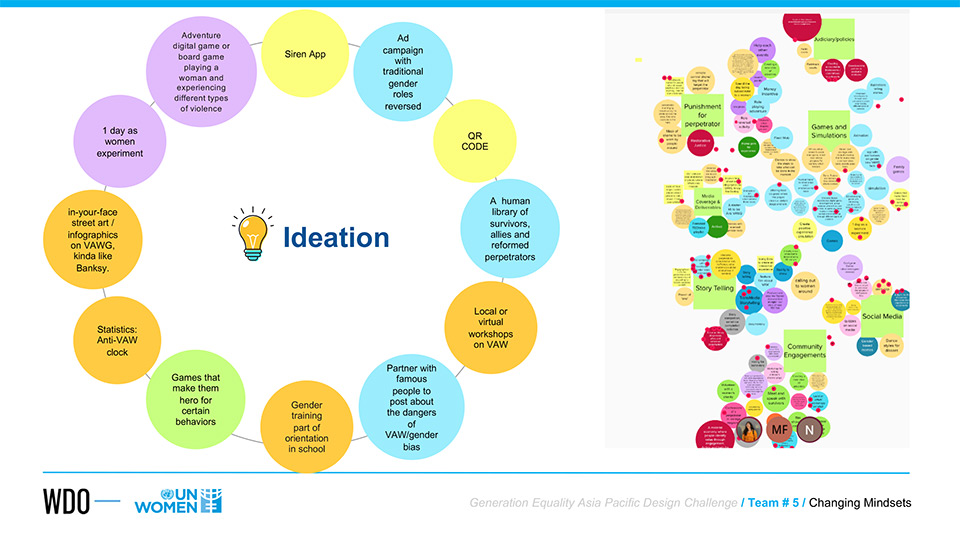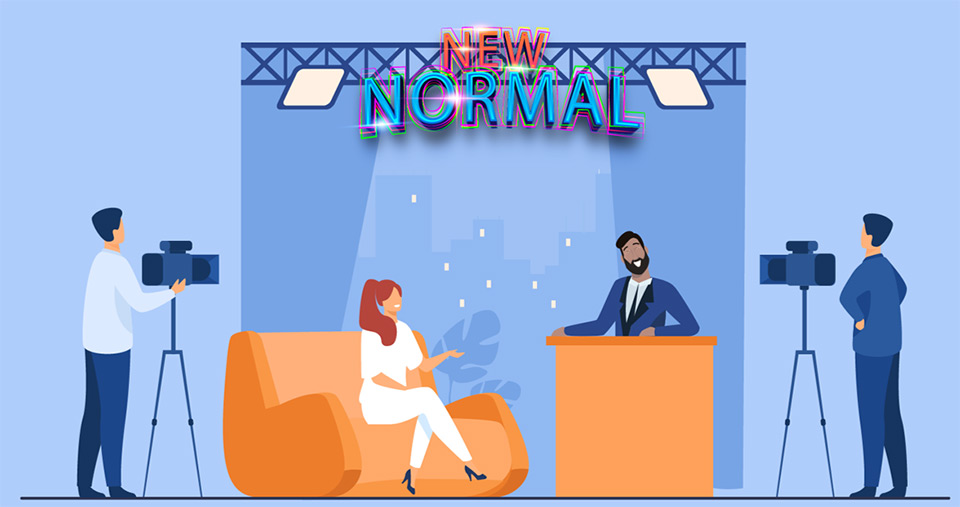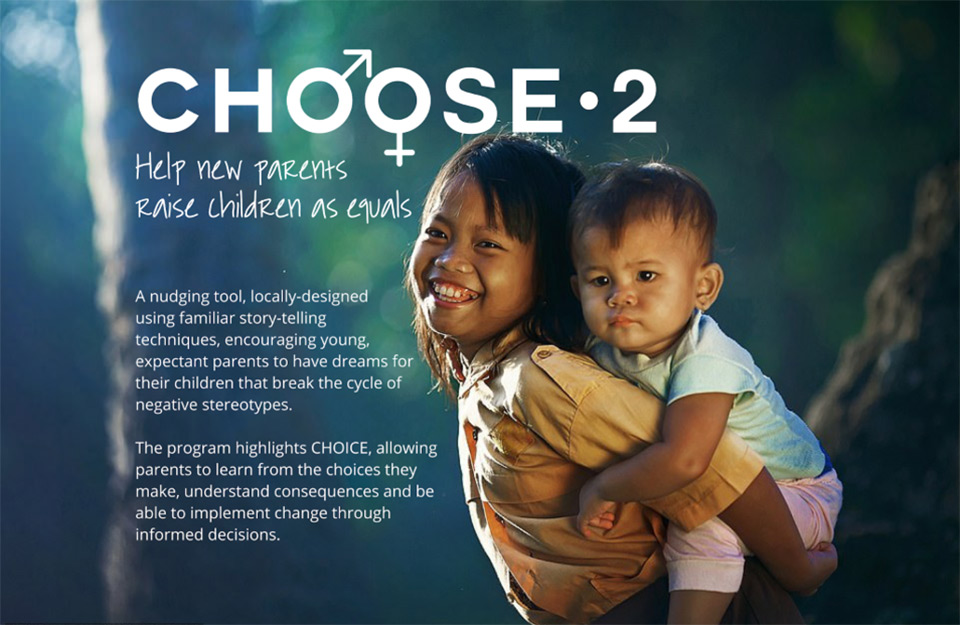Young designers and experts imagine innovative solutions to prevent violence against women in Asia and the Pacific
Date:
Author: Aijamal Duishebaeva

What happens when you bring together more than a hundred bright young professionals from twenty-nine countries across disciplines ranging from design, psychology, international development, to tackle the issue of violence against women over two weeks?
“This experience has been life-changing for me.”
“Now that I learnt so much about violence against women and gender equality, I will take these issues into consideration every time I design products for clients.”
“The amount of learnings I take with me from this journey over the past two weeks is immeasurable. THANK YOU for creating a safe, nurturing and inspiring space — which is now a community/family.”
“It’s amazing how these two weeks panned out. Such a diverse group spread across the globe, which came together for the cause and now we have so much more to share. It was a fun, engaging, collaborative, inspiring journey with so much to learn from each one of you.”
Earlier this year, UN Women Asia and the Pacific and World Design Organization (WDO) “sat together” virtually to collaborate on the persistent issue of violence against women and girls in the region. The two organizations decided to experiment and give freedom to thoughts, ideas and solutions to locate new ways of ending violence- knowing that one in three women globally experiences violence in her lifetime, and even more in some parts of Asia and the Pacific.
The collaboration between the two organizations aims to address violence through the lens of design by identifying human-centric, solution-based initiatives that will contribute to achieving several development outcomes such as better health, education, civic participation and gender equality.
The first phase of the collaboration is the Generation Equality Asia Pacific Design Challenge that was widely announced and brought together people from various disciplines interested in preventing violence against women.
Over the course of two weeks, the participants worked tirelessly to produce an array of inspired, inclusive and thoughtful solutions to address this complex and urgent issue.
Using a human-centric design methodology to discover new, impactful solutions to give shape to new solutions to ending violence against women and girls is a newer experience for many from UN Women. With guidance from experts and thought leaders, the teams spent many hours working on design-driven concepts that put humans at the centre of the thinking process and evidence up front, conducting interviews with stakeholders and potential users, brainstorming big ideas, and creating storyboards to refine and present their concepts.
“Design is an important and integral part of the development process and our intent is to encourage government, industry and community to think about design as a means to solve problems,” stated WDO President Srini Srinivasan. “We are truly pleased that we were able to use design as a tool to drive positive and replicable solutions for people affected by violence against women and girls.”

Six teams worked remotely, alongside human-centric design process facilitators and experts on ending violence against women, to address six challenge statements promoting behavioural change to reduce violence against women. The key challenges were: (i) enlisting community leaders and influencers; (ii) leveraging media to challenge stereotypes; (iii) moving people emotionally and empathically to act; (iv) changing the mindset that violence against women is normal; (v) transforming men’s entitlement; and (vi) influencing parents to raise children to reject harmful gender stereotypes and violence.

UN Women’s regional lead for ending violence against women in Asia and the Pacific, Melissa Alvarado, observed, “This design challenge focused on ending violence against women and girls has solidified our understanding that speaking with diverse audiences is the way forward if we are going to achieve the kind of ambitious transformation that is needed. We embarked on this process knowing that we wanted to have conversations with creative professionals that may not often be involved in social issues such as violence against women, to spark new solutions. The result was dynamic, passionate conversations that produced several feasible ideas to help spur the kind of social transformation needed to eliminate any acceptance of violence and create new generations of individuals, families and communities that reject violence.”
Throughout the design sprint, teams created a variety of approaches, including card games, apps, mobile exhibitions, media collaborations, chatbots, QR code platforms, social media challenges, educational story books and other innovations. The ideas will be evaluated against the challenge criteria and taken to the next phase for prototyping and implementation.
In her closing remarks at the playback session where teams presented their solutions, Wenny Kusuma, UN Women Country Representative for Nepal said: “You have been designing for social transformation in the future by engaging in a very meaningful, personal change process in the present. That is the nature of what you have accomplished here. Through the last two weeks, your discussions, your research, your interviews, your debates — this is all what it means to engage; to undertake social change and you have been right at the heart of it.”

Lauralyn Silva, one of the design challenge participants, said: “Although there’s still much to learn, I won’t stop advocating for gender equality because it’s an issue that not only affects women and girls, but everyone else as well.”